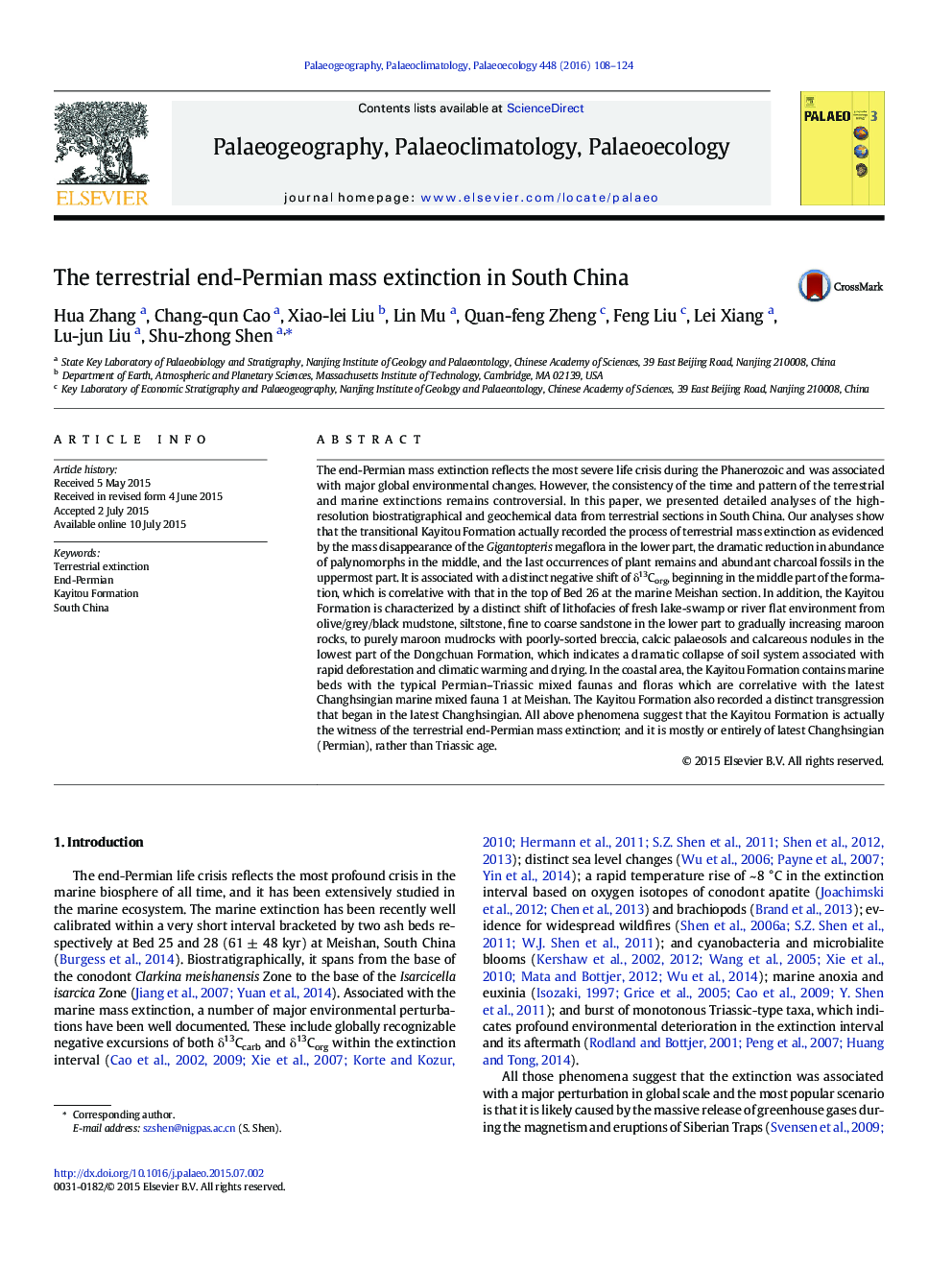| کد مقاله | کد نشریه | سال انتشار | مقاله انگلیسی | نسخه تمام متن |
|---|---|---|---|---|
| 4465843 | 1622143 | 2016 | 17 صفحه PDF | دانلود رایگان |
• The terrestrial end-Permian mass extinction in South China is constrained.
• The time and pattern of the terrestrial and marine extinctions are consistent.
• The Kayitou Formation is the witness of the terrestrial end-Permian mass extinction.
The end-Permian mass extinction reflects the most severe life crisis during the Phanerozoic and was associated with major global environmental changes. However, the consistency of the time and pattern of the terrestrial and marine extinctions remains controversial. In this paper, we presented detailed analyses of the high-resolution biostratigraphical and geochemical data from terrestrial sections in South China. Our analyses show that the transitional Kayitou Formation actually recorded the process of terrestrial mass extinction as evidenced by the mass disappearance of the Gigantopteris megaflora in the lower part, the dramatic reduction in abundance of palynomorphs in the middle, and the last occurrences of plant remains and abundant charcoal fossils in the uppermost part. It is associated with a distinct negative shift of δ13Corg, beginning in the middle part of the formation, which is correlative with that in the top of Bed 26 at the marine Meishan section. In addition, the Kayitou Formation is characterized by a distinct shift of lithofacies of fresh lake-swamp or river flat environment from olive/grey/black mudstone, siltstone, fine to coarse sandstone in the lower part to gradually increasing maroon rocks, to purely maroon mudrocks with poorly-sorted breccia, calcic palaeosols and calcareous nodules in the lowest part of the Dongchuan Formation, which indicates a dramatic collapse of soil system associated with rapid deforestation and climatic warming and drying. In the coastal area, the Kayitou Formation contains marine beds with the typical Permian–Triassic mixed faunas and floras which are correlative with the latest Changhsingian marine mixed fauna 1 at Meishan. The Kayitou Formation also recorded a distinct transgression that began in the latest Changhsingian. All above phenomena suggest that the Kayitou Formation is actually the witness of the terrestrial end-Permian mass extinction; and it is mostly or entirely of latest Changhsingian (Permian), rather than Triassic age.
Figure optionsDownload high-quality image (285 K)Download as PowerPoint slide
Journal: Palaeogeography, Palaeoclimatology, Palaeoecology - Volume 448, 15 April 2016, Pages 108–124
